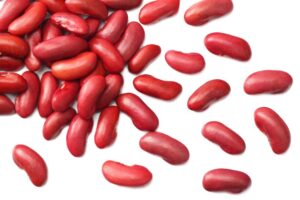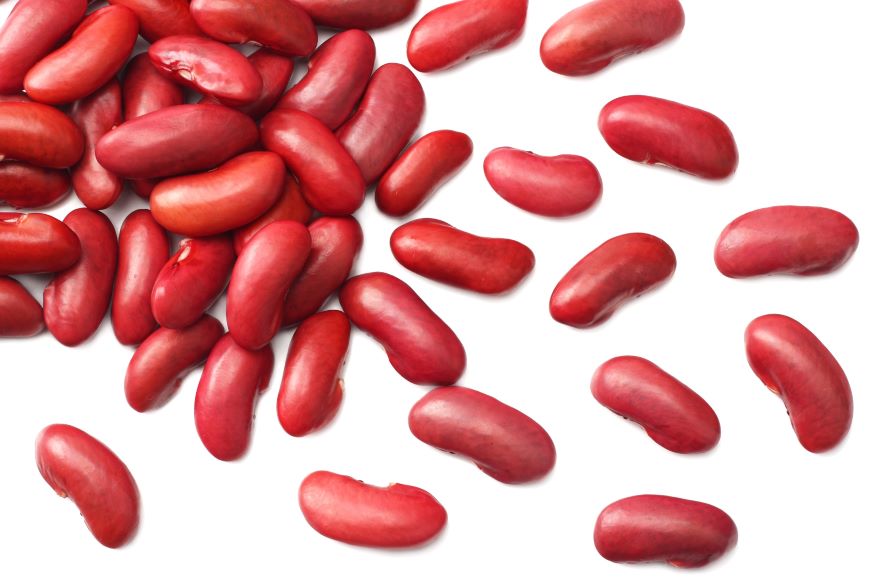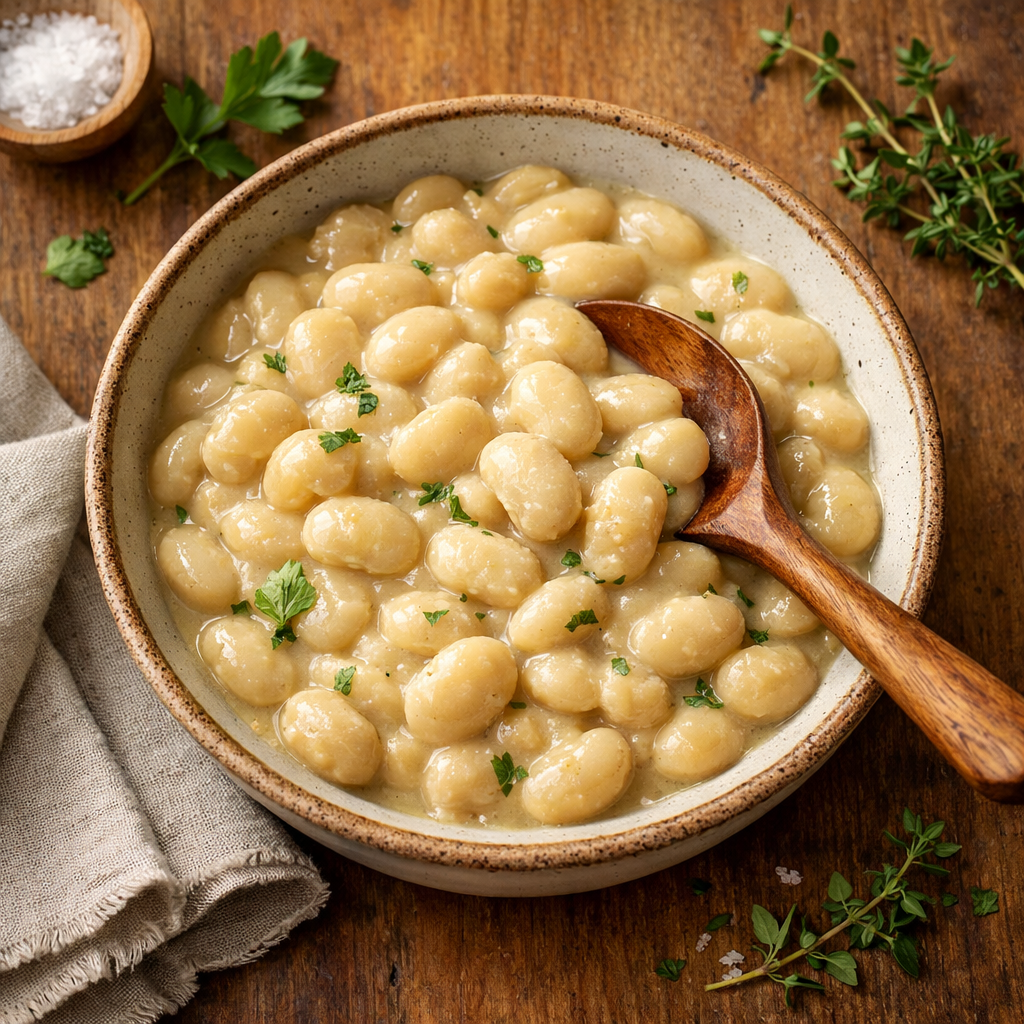Last Tuesday evening, I stood in my kitchen at 6 PM, staring at a bag of dried kidney beans and realizing I had completely forgotten to soak them overnight. My family was expecting their favorite three-bean chili for dinner, and I was facing the prospect of either ordering takeout or spending the next three hours babysitting beans on the stovetop. That’s when I remembered my neglected Instant Pot sitting in the corner. Little did I know that cooking Instant Pot kidney beans would completely transform my approach to meal planning and become my secret weapon for nutritious, budget-friendly dinners.
Premium Instant Pot Pro: The Weeknight Game-Changer
Upgrade your weeknights: The Instant Pot Pro 10-in-1 (6-Qt) is the premium model built for busy, health-minded cooks—fast pressure performance, refined controls, and a robust stainless pot make every bean batch effortless and consistent.

Instant Pot Stainless Steel Inner Cooking Pot 6-Qt, Polished Surface, Rice Cooker
- EASY TO CLEAN: You won’t need to scrub so hard to get rid of stains. This stainless-steel cooking pot has a polished surface that allows for easy cleaning. It is dishwasher safe, and the food sticks less to the surface
- EVEN HEAT: Get ready to create amazing culinary masterpieces with the right cooking tool. The Instant Pot stainless steel inner cooking pot features a 3-ply bottom that distributes heat evenly when cooking
- DISCOVER AMAZING RECIPES: Includes the free Instant Brands Connect App, where you can find new recipes to create quick favorites and prepare delicious meals, available for iOS and Android
- STAINLESS STEEL: Safe for food preparation, the Instant pot stainless steel inner cooking pot has no chemical coating and is made with food grade 304 (18/8) stainless steel
What started as a desperate weeknight solution has evolved into my preferred method for preparing this protein-packed legume. The convenience factor alone sold me, but the superior texture and enhanced safety features keep me coming back to this method week after week.

Instant Pot Pro 10-in-1: Your All-in-One Kitchen Powerhouse
Upgrade your weeknights: The Instant Pot Pro 10-in-1 (6-Qt) is the premium model built for busy, health-minded cooks—fast pressure performance, refined controls, and a robust stainless pot make every bean batch effortless and consistent.

Instant Pot Pro 10-in-1 Pressure Cooker, Slow Cooker, Rice/Grain Cooker, Steamer, Sauté, Sous Vide, Yogurt Maker, Sterilizer, and Warmer, Includes App With Over 800 Recipes, Black, 6 Quart
- 10 Cooking Functions: Pressure cook, slow cook, sous vide, sauté, sterilize, cook yogurt and rice, bake, steam, or simply keep warm, all in one easy appliance
- Customizable Smart Programs: Tackle every recipe with 28 one-touch options covering all essential meals
- Good Food Done Faster: Preheat 20% faster and cook up to 70% faster compared to slow cooking methods
- Easy & Convenient Steam Release: Gentle steam release switch and diffusing cover allow you to confidently and quietly release steam every time
Why I Switched to Pressure Cooking Kidney Beans
My relationship with kidney beans used to be complicated. I’d buy dried beans with the best intentions, only to watch them expire in my pantry because I could never remember to soak them ahead of time. The traditional stovetop method demanded too much attention and planning for my chaotic schedule as a working parent.
The breaking point came during a particularly busy month when I attempted to cook unsoaked kidney beans using my slow cooker. Not only did they take nearly eight hours to become tender, but I later learned that slow cooking kidney beans at low temperatures can actually increase the concentration of harmful lectins. This discovery sent me straight to pressure cooking research.
The time difference is staggering. What once took me 6-8 hours of soaking plus 2-3 hours of cooking now takes just 45 minutes from start to finish. More importantly, the high-pressure environment eliminates the toxic compounds naturally present in raw kidney beans, making this method both faster and safer than traditional cooking techniques.
The Science Behind Perfect Instant Pot Kidney Beans
Pressure cooking operates on a fascinating principle that makes it ideal for kidney bean preparation. Inside the sealed environment, steam builds pressure that raises the boiling point of water to approximately 250°F, compared to the standard 212°F at sea level. This elevated temperature ensures complete elimination of phytohemagglutinin, the lectin responsible for kidney bean toxicity.
I’ve experimented with various pressure levels and timing combinations, and high pressure consistently delivers the best results. The intense heat breaks down the bean’s cellular structure more efficiently than gentle simmering, creating that perfect creamy interior while maintaining structural integrity. This process also enhances nutrient availability, making minerals like iron and potassium more bioavailable for absorption.
The sealed environment prevents nutrient loss through evaporation, something I noticed significantly when I compared the cooking liquid from pressure-cooked beans versus stovetop-prepared ones. The instant pot liquid retained more color and flavor, indicating better vitamin and mineral retention.
Selecting Your Beans: Fresh vs. Dried vs. Canned
After testing countless varieties and sources, I’ve developed strong preferences based on texture, flavor, and cost considerations. Dried kidney beans consistently deliver superior results in terms of texture control and flavor absorption. A two-pound bag costs roughly $3 at my local grocery store and yields approximately twelve cups of cooked beans, compared to $8-10 for the equivalent amount of canned beans.
Quality indicators I’ve learned to recognize include uniform size, deep color, and absence of wrinkled or cracked skins. Beans from the current harvest year cook more evenly and require less time than older stock. I typically buy from stores with high turnover and check packaging dates when possible.
Canned beans serve their purpose for last-minute additions to salads or soups, but they lack the firm texture I prefer for main dishes. The sodium content and slightly mushy consistency make them less versatile than home-cooked alternatives. However, I keep a few cans as backup for emergency meal situations.
My Foolproof Instant Pot Kidney Beans Method
Through extensive trial and error, I’ve perfected a technique that delivers consistently excellent results. I start with one pound of dried kidney beans, which I rinse thoroughly in cold water until the water runs clear. This step removes surface dust and broken bean fragments that could cloud the cooking liquid.
My preferred water ratio is 1:3 – one cup of beans to three cups of water. This proportion provides enough liquid for even cooking without creating excessive leftover liquid. I add one teaspoon of salt and two bay leaves for basic seasoning, though I often experiment with garlic cloves or onion quarters for flavor variations.
The cooking process involves setting the Instant Pot to high pressure for 40 minutes, followed by a natural pressure release for 15 minutes before switching to quick release. This gradual pressure reduction prevents the beans from splitting due to rapid temperature changes, maintaining their attractive appearance for presentation dishes.
Troubleshooting Common Mistakes
Despite following recipes carefully, I’ve encountered several issues that taught me valuable lessons about pressure cooking kidney beans. Undercooked beans typically result from insufficient cooking time or using very old dried beans. When this happens, I simply return the pot to high pressure for an additional 10-15 minutes rather than starting over.
Mushy texture usually stems from overcooking or using the quick release method immediately after cooking. I learned this lesson during a batch intended for salad use – the beans fell apart completely when I tried to cool them quickly. Now I always factor in the natural release time as part of the cooking process.
Excessive foam was another early challenge, particularly when cooking larger quantities. Adding a tablespoon of oil to the cooking liquid eliminates this problem without affecting flavor or texture. This discovery came from an experienced pressure cooking friend who shared the tip during a particularly frustrating cooking session.
Weekly Meal Prep with Instant Pot Kidney Beans
Batch cooking has revolutionized my meal planning strategy. Every Sunday, I prepare two to three pounds of kidney beans, which provides protein components for the entire week’s meals. This approach saves significant time during busy weekday evenings while ensuring my family always has access to nutritious, homemade food options.
My storage system involves dividing cooked beans into two-cup portions using glass containers.
Meal prep that looks (and seals) like a pro: The Rubbermaid Brilliance Glass set is leak-proof, oven-safe (bases), and stackable—perfect 2-cup portions that keep your beans fresh and ready for fast dinners.

Rubbermaid Brilliance Glass Food Storage Containers, Assorted Sizes, Set of 9, BPA-Free, Leak-Proof, Clear
- LEAK-PROOF AND AIRTIGHT: Rubbermaid Brilliance Glass Food Storage Containers have crystal-clear lids that are 100% airtight and leak-proof, plus odor and stain resistant
- EASY STORAGE AND REHEATING: Glass containers have vented, microwave-safe lids for easy, splatter-resistant microwaving
- SPACE SAVING: Space-saving, modular Rubbermaid containers are perfect for stacking and organization
- OVEN-SAFE: Glass bases are oven-safe up to 450 degrees F, so they double as glass cookware and serveware
This amount works perfectly for most of my regular recipes, from chili and soups to grain bowls and salads. I reserve some cooking liquid in separate containers, as it makes an excellent base for soups or can be used to thin bean-based dips.
Properly stored cooked kidney beans maintain their texture for up to five days in the refrigerator. For longer storage, I freeze portions in freezer-safe containers, where they keep for up to six months. Frozen beans thaw beautifully and retain their texture remarkably well, making them convenient for unexpected meal needs.
My Go-To Smoky Chipotle Kidney Bean Bowl
This recipe evolved from my experimentation with southwestern flavors and has become my family’s favorite way to enjoy kidney beans. The smoky heat from chipotle peppers pairs beautifully with the earthy bean flavor, while fresh vegetables add textural contrast and nutritional variety.
Ingredients:
- 2 cups cooked kidney beans
- 1 chipotle pepper in adobo, minced
- 1 tablespoon adobo sauce
- 1 cup cooked brown rice
- 1/2 red onion, diced
- 1 bell pepper, diced
- 1 cup corn kernels
- 2 tablespoons olive oil
- 1 lime, juiced
- 1/4 cup cilantro, chopped
- 1 avocado, sliced
- 2 tablespoons pepitas
Heat olive oil in a large skillet over medium heat. Sauté onion and bell pepper until softened, about 5 minutes. Add corn and cook for an additional 2 minutes. Stir in kidney beans, chipotle pepper, and adobo sauce. Cook until heated through and flavors meld, approximately 3-4 minutes. Remove from heat and stir in lime juice and cilantro. Serve over brown rice and top with avocado slices and pepitas.
This bowl provides complete protein when combined with rice, plus healthy fats from avocado and crunch from pepitas. The chipotle adds complexity without overwhelming heat, making it appealing to both adults and children.

Creative Ways to Use Your Cooked Beans
Beyond traditional chili and soup applications, I’ve discovered numerous creative uses for pressure-cooked kidney beans. They work beautifully in Mediterranean grain salads, where their firm texture holds up well against acidic vinaigrettes and fresh herbs. I often combine them with farro or quinoa, cucumber, tomatoes, and feta cheese for a protein-rich lunch option.
Indian-inspired curry applications have become another favorite use. The beans absorb spices wonderfully, and their creamy interior provides a satisfying substance to coconut milk-based curries. I particularly enjoy them in a simple curry with onions, ginger, garlic, and garam masala served over basmati rice.
For quick weeknight dinners, I mash half a cup of cooked kidney beans with garlic and herbs to create an instant pasta sauce base. This technique adds protein and fiber to simple pasta dishes while creating a creamy texture without heavy cream or cheese.
Breakfast applications might sound unusual, but kidney beans work surprisingly well in savory breakfast hash combinations with sweet potatoes, peppers, and eggs. The protein content makes these breakfasts incredibly satisfying and helps maintain stable blood sugar levels throughout the morning.
Cost Analysis: Homemade vs. Store-Bought
The financial benefits of cooking kidney beans from scratch are substantial. Based on current prices at my local grocery stores, dried kidney beans cost approximately $1.50 per pound, yielding about six cups of cooked beans. Equivalent canned beans would cost $4-5, representing a significant markup for minimal convenience.
Quality differences extend beyond cost considerations. Homemade beans offer superior texture control, lower sodium content, and the ability to customize flavoring during the cooking process. I can also control the cooking liquid consistency, which proves valuable for specific recipe applications where bean liquid serves as a base for soups or stews.
Environmental impact considerations factor into my decision as well. Bulk dried beans require less packaging than individual cans, and pressure cooking uses less energy than extended stovetop simmering. These factors might seem small individually, but they add up significantly when cooking beans regularly for a family.
Long-term savings become even more impressive when considering frequency of use. My family consumes kidney beans approximately twice weekly, making the annual savings substantial enough to justify dedicated pantry storage space for bulk purchases.
Health Benefits I’ve Noticed
Since incorporating regular kidney bean consumption into our family’s diet, I’ve observed several positive health changes. The high fiber content has definitely improved digestive regularity, and the protein helps maintain satiety between meals. This combination has reduced our tendency to snack on less nutritious options throughout the day.
Blood sugar stability has improved noticeably, particularly when kidney beans are included in lunch meals. The combination of protein, fiber, and complex carbohydrates provides sustained energy without the afternoon crashes I used to experience with lighter, carbohydrate-heavy lunches.
Recovery after strength training workouts seems faster when I include kidney beans in post-workout meals. The protein content, combined with naturally occurring minerals like iron and potassium, supports muscle repair and helps prevent fatigue. This benefit has been particularly noticeable during periods of increased physical activity.
The iron content has been especially valuable for family members prone to iron deficiency. Kidney beans provide non-heme iron that absorbs better when combined with vitamin C sources, making them an excellent alternative to meat-based iron sources for those following plant-forward eating patterns.
Through consistent preparation and creative application, cooking Instant Pot kidney beans has transformed from a desperate weeknight solution into a cornerstone of our family’s healthy eating strategy. The combination of convenience, nutrition, and versatility makes this technique indispensable for anyone seeking to improve their diet while managing time and budget constraints effectively.

*We may earn a commission for purchases made using our links. Please see our disclosure to learn more.



